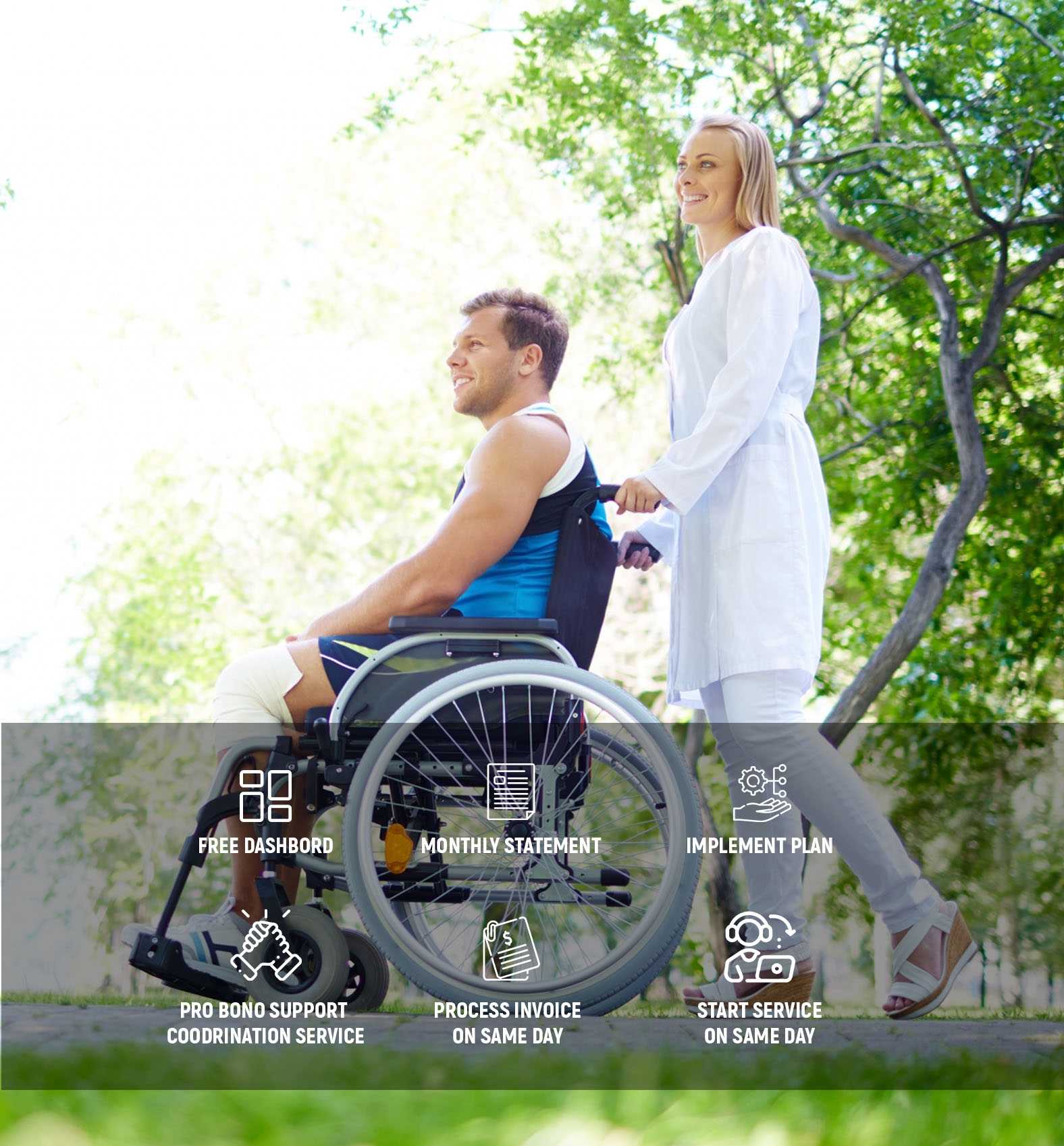What are they?
Throughout your National Disability Insurance Scheme (NDIS) journey, it’s easy to be overwhelmed with new types of terminology and phrases that might seem complicated or hard to understand. When it comes to funding your supports, it’s essential to have a good grasp of how it all works. On this page, we’ll walk through everything you need to know about support budgets, the budget categories, and how you can get the most out of your funding.
Participants within the (NDIS) have access to three different support categories as part of their NDIS funding: Core, Capacity and Capital support. The support categories will determine how much funds you can allocate to different areas of your life deemed ‘reasonable and necessary’ by the NIDS.
What is reasonable and necessary support or services?
What are the different types of supports?
Core support
What is core support?
Core support is responsible for helping a participant with their day to day lives and needs related to their disability. Areas such as personal care, accommodation, mobility factors and community engagement are at the heart of what core support is responsible for.
Some examples of issues core support may assist a participant with:

Core Support Categories
Assistance with Daily living
The assistance with daily living core support categories aims to enable participants with greater help and independence regarding their daily life. Living with a disability can mean that conducting essential personal, home, and self-care tasks are impossible or extremely difficult on one’s own.
Examples

Where in the ‘Myplace’ Client Portal?
Transport
Travel and freedom of movement are essential to living a fulfilling life. NDIS participants can gain funding for specialised transport if they cannot use public transport and the support is deemed reasonable and necessary.
Examples
Transport funding comes in three levels of support:
Where in ‘Myplace’ Portal?
Consumables
A consumable is considered an aid such as specialised clothing, edible or hygiene item that a participant requires in their everyday lives. These products are usually things that give a participant a greater sense of independence or an increased level of dignity that they couldn’t achieve without them. It can often be hard to define precisely what a ‘consumable’ is, but if it is something a participant will use regularly and directly contributes to their day-to-day standard of living, it is likely it falls under this support category.
Examples
Where in ‘Myplace’ Client Portal?
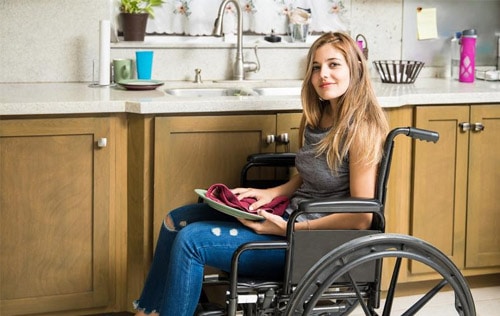
Assistance with Social and Community Participation
Participation with a community is an essential part of life and brings so many benefits to individuals of all walks of life and circumstances. Funding is available to enable participants to engage with their community and take a more active role in sports, classes, field trips and social events.
Examples

Where in ‘Myplace’ Client Portal?
How can I make the most out of my core support?
Think ahead
Core support budget funding, like much of NDIS funding, is tied to your goals. So the best way to get the most out of your core supports is to have a really good think of what your goals are and what support you need to achieve them.
For example, if one of your goals is to participate in the community by playing sports, think about all the additional support you may need to achieve that goal. Think about where you are now and each step you need to take to reach that goal. You may need support in; building social confidence, getting specialist transport to and from the activity, equipment to help you take part, consumable items such as food or hygiene products, one-on-one coaching to learn and a support worker to accompany you.

By taking a step-by-step approach, you can start to see the path to achieving your goal, and you will likely get more significant core support funding if you’ve considered everything.
Be Budget Savvy
Funding for core budget support is usually given out in lump-sum payments. So this means that it needs to last for the duration of your plan. But what makes the NDIS so unique is that the choice and control of how and where you spend it (provided it falls under the support category) is up to you. Meaning you are free to shop around for a support or service provider that will help you reach your goals for the best possible price. But make sure to do your research and ask any potential support or service a lot of questions to get comfortable with them.
Set yourself a monthly budget funds limit and make sure you stick within it, or you run the risk of running out of money before your plan renews.

How can I make the most out of my core support?
Core funding is the most common form of funding for most NDIS participants and is the most flexible type of funding available. NDIS participants can spread their funding across all four categories and set aside funding for specific purposes.
This funding structure means that as your goals progress and priorities change, you can allocate funding into other categories as long as they fall under a ‘core’ support description.
For example, if you feel like you are making significant progress on your social coaching support and no longer need that support to help you reach your goal, you can allocate that funding into another core support.
Capacity Building Support
What is Capacity Building?
Capacity building refers to the process of increasing the skills and independence of a participant through progressive milestones that contribute to their NDIS goals and long-term independence.
Capacity building support is very different from core support in that funding can not be moved around other supports or categories. For example, if you receive funding for one of the nine specific capacity building support categories, the funding must only be used for that category and not moved.
Below are outlined the nine different categories and some examples of how a participant can use them.
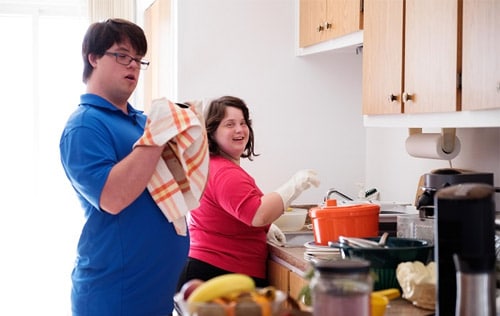
Capacity Building Support Categories
Support Coordination
NDIS participants often find it challenging to navigate and plan all of the different supports in their life. Support coordination funding is available for participants to pay a support coordinator to help them manage their NDIS plan and support schedule.
Examples
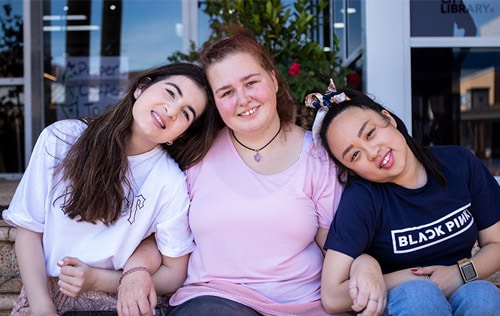
Where in ‘Myplace’ Client Portal?
Improved Living Arrangements
Greater independence and improved living often begin in the home. Finding a suitable place that meets a participant’s individual needs can be challenging. Support is given to individuals who require help in finding and maintaining a place to live.
Examples

Where in ‘Myplace’ Client Portal?
Increased Social and Community Participation
This support category includes many supports that may help an NDIS participant engage in more social situations or participate in the community with greater confidence. This category is all about building those life skills that will empower people to get out and about whilst relying less and less on supports.
Examples

Where in ‘Myplace’ Client Portal?
Finding and Keeping a Job
Nothing grants greater independence and instils a sense of pride like finding a keeping a job. This funding can be used to work towards a participant’s goal of finding employment in various ways.
Examples:
Where in ‘Myplace’ Client Portal?

Improved Relationships
Building and improving relationships can have long-lasting benefits for people with disabilities. Support and training are available to individuals who desire to develop strategies that may help them with their existing relationships and build new ones.
Examples
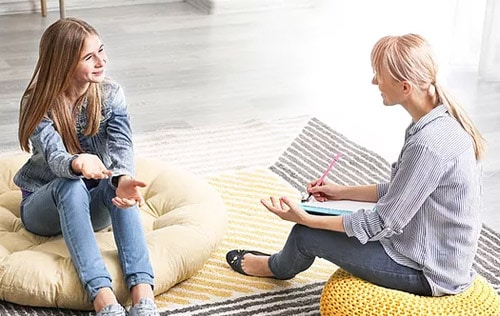
Where in ‘Myplace’ Client Portal?
Improved Health and Wellbeing
Building strategies to improve health and wellbeing can lead to long-lasting benefits for NDIS participants and will help improve many other areas of their life. Support funding can be used to build strategies to develop healthy habits and work on personal wellbeing practices. (Note that the NDIS does not fund gym memberships)
Examples
Where in ‘Myplace’ Client Portal?
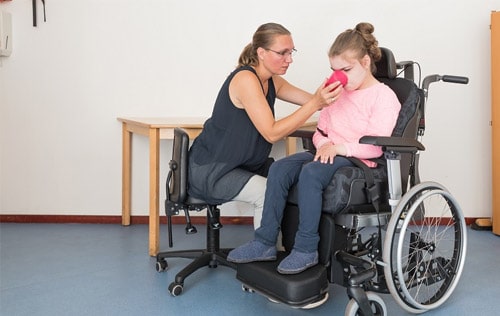
Improved Learning
School and education are an avenue that is available to everyone with the proper support and learning strategies in place. The National Disability Insurance Scheme can help participants improve their learning and enter training and higher education institutions such as Tafe or university.
Examples:

Where in ‘Myplace’ Client Portal?
Improved Life Choices
Determining one’s future and making important life choices is a significant and fulfilling part of life. For individuals who require help to manage and maintain their lives, there is support available that will work towards helping you reach greater independence and improved decision-making skills.
Examples
Where in ‘Myplace’ Client Portal?

Improved Daily Living
Improving the daily living of people with disabilities is at the core of capacity building support budget funding. This category is set aside for funding supports that help builds improved capacity to live more independently and enhance community participation.
Examples:

Where in ‘Myplace’ Client Portal?
How can I spend my capacity building budget funding?
Capacity support funding is tied within each specific category and can not be transferred to other categories. This gives participants some flexibility but not as much as core support funding allows.
For example, you have received $5000 in capacity building funding that falls under the category of Increased Social and Community Participation. You have allocated 50% into transport training costs, 30% into speech therapy and the remaining 20% into some socialising classes. Over time, you may not need the transport training anymore, or you feel comfortable and capable quicker than expected. You can use the money you would have spent on transport training on another support or service within that category. However, you cannot change the category where that funding has been allocated.
To receive funding for the different categories, you must come prepared to the planning meeting and have a good idea of what kind of capacity building supports you’ll need and how many sessions you think you’ll require. Funding is only given out if a participant can show that a support is ‘reasonable and necessary’.
How Can Capacity Building help?
Capacity building is essentially a learning journey. By building capacity, you are building upon your skills in different areas of your life that will contribute to you living more independently and less reliant on supports.
Capacity building can be the steppingstone to small or large life goals achieved over months or even years.
Through careful planning, reflection and determination, there are so many improvements to the day to day lives available to NDIS participants.
Each capacity building category represents an area of life where there is support available to reach new levels of independence.
Capital Support
What is Capital Support?
Capital Support is available for expensive equipment or modifications to someone’s home or an automobile that will significantly impact their life and living arrangements. These supports are most likely assistive technology equipment such as specialised wheelchairs and other equipment or significant changes to someone’s home such as a mobility renovation.
Funding for Capital Support is only given out for a specific purpose and cannot be used for anything other than what it was approved for.
There are two categories of Capital Support, Assistive Technology & Home Modifications, that are available to NDIS participants providing they are reasonable and necessary.

There are a wide variety of equipment and modifications that are available if the NDIS approves it. Below we’ll outline just some of the Capital Support available but speak to your primary carer or your local area coordinator if you need more information.
Assistive Technology (AT)
Assistive Technology refers to equipment or specialised technology that help NDIS participants live their everyday lives more independently or enable carers and support workers to better see to their needs.
NDIS will likely approve funding for AT if it directly contributes to participants mobility, personal care, recreation, community engagement, and communication abilities.
Examples of AT

Examples of AT Vehicle modifications
Where in ‘Myplace’ Client Portal?
Home Modifications
Having the freedom of movement and living independently is a significant hurdle for many individuals living with a disability. There is funding support available to make modifications to people’s homes if there is a ‘reasonable and necessary’ need for it. These modifications can include changes to the layout, the structure, and the fittings within a house. Modifications to a home are likely pending assessments from qualified supports such as occupational therapists.
Examples
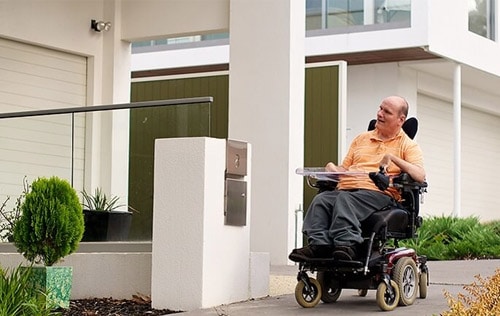
Home modifications for NDIS participants may also include access to Specialised Disability Accommodation (SDA). SDA is a house or unit that has been designed to meet specific needs and is reserved for individuals with a very high level of care requirements and who have very low levels of mobility and independence.
Where in ‘Myplace’ Client Portal?
How can I spend my capital support budget?
The funding that the NDIS provides for capital support can not be used in any other capacity. This means that if you have received funding for a handrail in your bathroom but have now decided that you want a walking frame instead, you can not spend the money intended for a handrail on a walking frame. You will need to provide receipts and quotes to the NDIS to remain compliant, and misallocating funds for non-approved items can result in negative consequences.
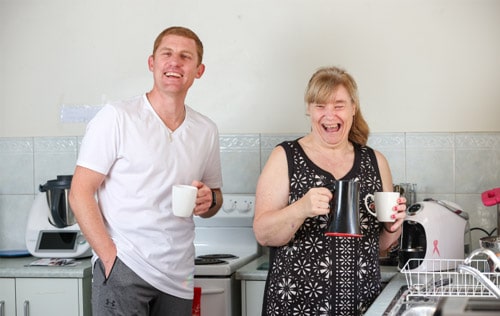
How can I make the most out of my capital support?
Almost all funding in your NDIS budget will be connected to the specific goals you have made. To get the most out of the opportunities capital support can provide, it’s important that you have set clear goals and outlined how assistive technology or modifications to your home will help you reach those goals.
For example, if one of your goals is to gain more independence, outlining how an accessibility ramp, handrails and a modified kitchen will help you reach those goals is a great start. The more prepared you are for your planning meeting, the more likely you will receive the support funding that will contribute to meaningful changes in your quality of life.

What is the difference between core support, capacity building support and capital support?
Are you feeling a little bit overwhelmed? It can be easy to get bogged down in the details of all the support funding categories, budget types and what they can help you with. But when you take a step back and break it down, it can feel a lot more manageable.
There are a lot of differences between core, capacity and capital support, but here’s a simple breakdown of each one.

